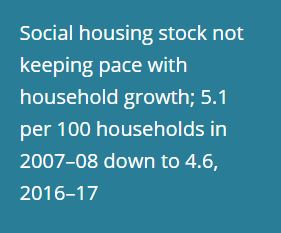The Australian Institute of Health and Welfare (AIHW) has released its findings into the most visible tip of the housing crisis iceberg – rough sleepers.
The report makes for grim reading, reinforcing the message from Finland that addressing homelessness requires a supply of affordable housing.
Financial difficulties (53 per cent) and housing stress (23 per cent) were the main drivers for rough sleeping for one-time users of specialist homeless services. While 36 per cent of this group needed long term housing, only 6 per cent were provided with it.
The situation of repeat users – ‘cyclers’ – was much worse. Unsurprisingly, housing affordability stress (59 per cent) and financial difficulties (88 per cent) drove them to repeatedly present to specialist homeless services.
Researchers identified five typical pathways into adult homelessness: housing crisis; family breakdown; substance abuse; mental health; and, transitioning from being homeless in youth (‘youth to adult’).
It also found two in three rough sleepers were male (65 per cent), aged over 35, and 19 per cent were Aboriginal.


